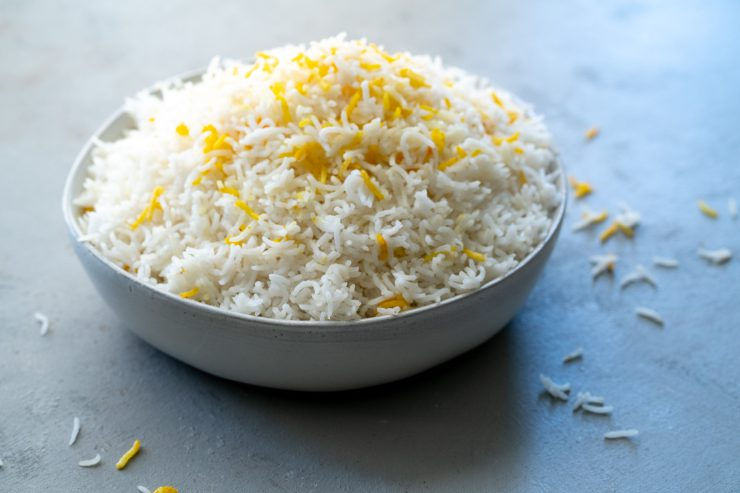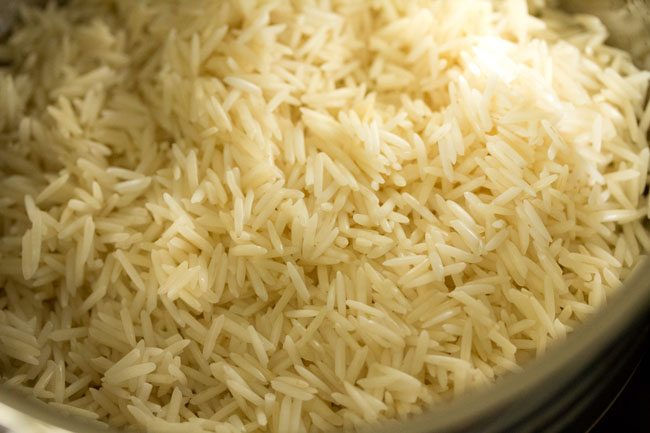How basic can you get? - a first recipe
- rosemarydearman1
- Aug 15, 2019
- 7 min read

Whenever I cook, I have to remind myself to be patient. So often the trick to cooking something right as opposed to just throwing something together has to do with slowing down and accepting that this will take a little longer. And basmati rice is the perfect example. Because the secret to making that perfect pot of rice is so simple. You just have to presoak it for 30 minutes." Steve Thomas-Patel - Indiaphile
Well I'm working my way backwards through my cookery book shelves on my First Recipe project, and, as you know, we are a bit stuck on Charmaine Solomon at the moment. Well I try to keep my various authors together, but sometimes this doesn't work because of the comparative sizes of the books and the shelves. Anyway here we are at my very first Charmaine Solomon book - her most famous and the one that launched her career - The Complete Asian Cookbook. I have two versions of this because she revised it many years later. It was a bit of a cheat though, because it is fundamentally exactly the same - even the same photographs.
I should pass one on to my daughter-in-law. Most of the recipes are exactly the same, indeed I think new recipes were not added, it was simply a matter of updating the recipes to replace dried and frozen ingredients with fresh ones - now so readily available, and also to include modern equipment such as food processors. It is an Australian classic - deservedly so, and enabled all of us eager cooks back in the 70s and 80s to explore the cooking of Asian food. And she does cover every single Asian country.
I told myself that if the first recipe in this book was a curry paste I would ignore it, as I had sort of done this before, but no it wasn't. However, it was something almost as basic. Rice. Well how India and Pakistan cooks rice - for her first section is on India and Pakistan.
Rice is apparently the second most popular staple crop in the world. I was marginally surprised at the first - maize - and agreed with Felicity Cloake, who said in her How to Cook Perfect Long-grain Rice article:
"who in their right minds would opt for polenta over pilau if they had a choice?"
And the more I think about it the more I find it hard to believe that there is more maize grown in the world than rice. Although now I look into it a little more, maize is used for things other than food for people, which explains it I guess. (And actually, according to Wikipedia, the most widespread grown agricultural plant is sugar cane!) I think I also find that a bit hard to believe. Rice is therefore the most widespread basic food in the world.
It is also extremely ancient. They now think that cultivation of rice began in China in the lower Yangtze River area some 13,500-8,000 years ago. Wow. From China it spread to India, the rest of Asia and really all over the world. We even grow some here in the driest continent on earth. In the tropical and much wetter north of course. But people don't just eat it because it's cheap and easy - actually I wouldn't think it's all that easy to grow because of all that flooding of fields and harvesting by hand.
"Asians don't eat rice because they can't get anything else … there are often other crops which would feed them more easily and cheaply. They go to the enormous trouble of cultivating rice because, in flavour, texture and general satisfaction, no other staple food comes anywhere near it." Sri Owen
And it seems we Europeans have been agreeing with this for some time:
"Rice is the best, the most nutritive and unquestionably the most widespread staple in the world." Auguste Escoffier
But back to Charmaine Solomon and her first recipe Namkin chawal (Plain savoury rice). Actually I think she may have the Indian name wrong for when I looked for pictures of Namkin chawal or articles, I found that that was a rice that included vegetables. Further investigation made me think that actually what we have here is Ghee rice, for which I cannot find a translation, but in a different Indian language is Nei choru.
Here is her recipe for two to four people.
1 1/2 cups long-grain rice, 2 teaspoons ghee, 2 1/2 cups hot water, 1 teaspoon salt.
Wash rice well if necessary. Drain in colander for 30 minutes. Heat the ghee in a heavy based saucepan with a well fitting lid. Add rice and fry, stirring for about 2 minutes. Add hot water and salt, stir and bring quickly to the boil. Turn heat very low, cover tightly, and cook, without lifting lid or stirring for 20-25 minutes. Lift lid to allow steam to escape for a minute or two, then lightly fluff up rice with fork, taking care not to mash the grains, which will be firm and separate and perfectly cooked. Dish up using a slotted metal spoon rather than a wooden spoon, which will crush the grains. Serve with curries or other spiced dishes.

I don't think I ever tried this method - so there you go - I obviously don't pay attention to first recipes, which rather calls this entire project into question. However, now that I have read it - and a few others - about which more in a moment - I aim to have a go. The critical thing here, I think is the frying of the rice in the ghee. And in spite of other recipes suggesting that you can use oil instead, the general opinion seems to be that it has to be ghee. And maybe that's what they do in Indian restaurants because it certainly tastes a little different to mine - whatever way I cook it. The other thing to note is that she pours hot water on to the rice. Steve Thomas-Patel also gives a recipe for Ghee rice, which actually sounds even better - well he just adds the ghee to the rice and covers with cold water. He is also keen on adding a bit of colour at the end with either saffron or turmeric.
"In addition to cooking the rice just right, another thing you can do to make your rice seem like it came from a restaurant is add some color. Many places will mix in some yellow rice just to give it a finishing touch. This is easy to do. Mix a little turmeric or saffron in a bowl with some water or milk, then stir in a handful of cooked rice. Then add that rice back to your final dish of rice. Most people use saffron, which is so prized for its aroma. But I don’t always want the strong aroma of saffron in my rice, so I often use turmeric which is much more subtle in flavor." Steve Thomas-Patel - Indiaphile
That's his version at the top of the page.
Also interestingly, with reference to Charmaine Solomon's version note that she does not presoak the rice - well she washes it and then leaves it to drain for half an hour, which is almost the same as soaking it. The general opinion from just about everyone, I have to say, is that you should definitely soak the rice before cooking - for half an hour or so - as this prevents the rice from splitting. Basmati, of course, is what we are talking about here. It has such a distinctive taste.
All of the cookery column writers, of course, refer to Madhur Jaffrey as the guru and if you click on her name you can find her version. Although I did read somewhere that she has four different methods of cooking plain rice. In the version I found there was no ghee, but she did soak it - indeed insisted on it. And dear Delia is more practical and doesn't neglect to mention equipment.
"A measuring jug is also vital when cooking rice, as this is always measured by volume rather than by weight" Delia Smith
In my day I have used different methods. I have boiled in stacks of water, drained and dried off in the oven. It works. I have done the basic absorption method, although I have not soaked the rice beforehand. I have also cooked it in my steam oven - and I have to say that this was pretty perfect and virtually mess free. However, these days I am sort of compelled to cook my rice in the rice cooker, because my husband thinks it's a miracle gadget. On one of our company related trips - to Borneo I think - we went to a cookery class and the demonstrator cooked her rice in a rice cooker - and so he decided that if it was good enough for her it was good enough for me. Maybe if I soaked the rice first and also fried it in ghee before I add the water it might work. Must try.
With regards to the first recipe concept, I guess this is an example of the kind of cookery book which is designed to teach you basics before leading you into the more complicated. Each chapter - each one based on a particular country - had an introductory piece on the way of eating in that particular country the ingredients and equipment they used, and then it began with basics before moving through the usual meal order - starters, soups, ... There was no picture attached to this recipe either. This is a relatively old book - 1975 - and publishers were not so lavish with their photographs back then. There were full page plates scattered throughout the book, but most of the dishes did not have a picture. I'm still not sure whether this is good or whether it is bad.
I began thinking that this was very uninspiring, but actually it has got me wanting to try the presoaking and the ghee thing next time I cook rice. You live and learn.
















Comments